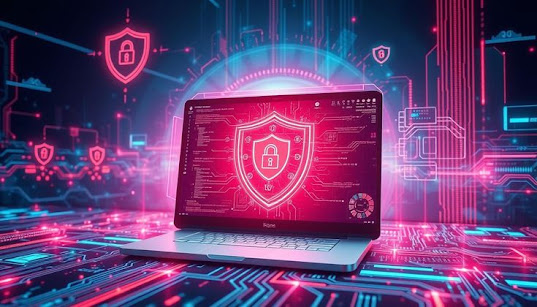AI vs. AI: How Machine Learning Is Changing the Cybersecurity Battlefield
AI vs. AI: How Machine Learning Is Changing the Cybersecurity Battlefield
Introduction
Cybersecurity has long been a game of cat and mouse between defenders and attackers. However, in 2025, this game has taken a revolutionary turn. With the rise of artificial intelligence (AI) and machine learning (ML), both sides now have advanced capabilities at their disposal. It's no longer just humans against machines or humans fighting humans. Today, it is increasingly AI vs. AI.
This blog explores how machine learning is transforming the cybersecurity battlefield, how defenders and attackers are leveraging it, the major implications of this shift, and what the future holds. As organizations and individuals embrace digital technologies more than ever before, understanding this new AI-powered warfare is not just important—it's essential.
A. The Rise of AI in Cybersecurity
AI's role in cybersecurity started with basic automation but has since evolved into sophisticated, autonomous systems. Security tools can now detect anomalies, predict potential breaches, and respond to threats in real time. AI models are being trained with vast datasets to understand what normal behavior looks like and to spot deviations instantly.
Key milestones in AI-driven cybersecurity include:
-
Behavior-based threat detection
-
Automated response to phishing and ransomware
-
Predictive analytics for breach forecasting
-
Natural Language Processing (NLP) for analyzing malware scripts and threat intelligence
AI is no longer just an assistant in cybersecurity; it has become a core combatant.
B. The Rise of Offensive AI
While AI offers incredible advantages to defenders, attackers are not far behind. Offensive AI is an emerging threat where malicious actors use machine learning to scale and refine cyberattacks.
How cybercriminals use AI in 2025:
-
AI-generated phishing emails: Hyper-personalized and highly convincing messages
-
AI-driven malware: Malware that adapts based on environment
-
Chatbot attacks: AI chatbots mimic human interaction to phish credentials
-
Deepfake social engineering: Voice and video deepfakes that deceive with frightening accuracy
-
Automated vulnerability discovery: Bots that scan the internet for weaknesses
This rise in offensive AI means cybersecurity professionals now fight a war on multiple fronts. It's not just about finding flaws in code, but anticipating and countering intelligent, self-learning threats.
C. Defensive AI Systems in 2025
To combat these intelligent threats, cybersecurity teams have started deploying even more advanced defensive AI tools.
Key defensive AI technologies include:
-
Extended Detection and Response (XDR) platforms that integrate AI
-
SOAR (Security Orchestration, Automation, and Response) with machine learning decision-making
-
AI-powered threat hunting tools that can proactively search for risks
-
Anomaly-based intrusion detection systems (IDS) that understand complex patterns
-
Deception technology using AI to create traps for attackers
Modern cybersecurity is now built around these AI tools, which can sift through billions of logs, correlate data, and uncover threats that would take humans days or weeks to identify.
D. The Arms Race: AI vs. AI in Real Time
One of the most fascinating aspects of 2025's cybersecurity battlefield is the real-time clash of AI systems. Offensive AI continuously evolves, and so must defensive AI.
Here’s how the battle plays out:
-
A phishing email created by AI bypasses traditional filters.
-
The defensive AI scans user behavior and flags an unusual login pattern.
-
The system responds autonomously: disables access, alerts the team, and launches an investigation.
-
The attacking AI then attempts alternate tactics based on previous failures.
This creates a dynamic environment where AI models are learning from each other, adapting strategies, and evolving in complexity. The battleground is no longer static; it's a live chess match played at machine speed.
E. Challenges in AI-Powered Cybersecurity
While AI has empowered defenders, it's not without its issues. Overreliance on machine learning can introduce blind spots.
Major challenges include:
-
Data bias: Poor training data can lead to ineffective models.
-
False positives/negatives: Incorrect classifications still plague AI.
-
Model poisoning: Attackers inject malicious data to corrupt learning models.
-
Resource intensity: High computational requirements to run real-time AI systems
-
Lack of transparency: Many AI decisions are still a black box.
As both sides deploy smarter tools, these challenges must be addressed to maintain the upper hand.
F. Human-AI Collaboration: Still Critical
Despite the automation surge, human oversight is still vital in 2025. AI tools are only as good as the engineers, analysts, and threat hunters guiding them.
Merits of combining AI with human intelligence:
-
Strategic decision-making
-
Ethical evaluations of threat responses
-
Customization of models based on business needs
-
Incident response with contextual understanding
-
Monitoring and retraining AI for accuracy
Instead of replacing humans, AI augments cybersecurity professionals, helping them make faster, smarter, and more informed decisions.
G. Ethical and Legal Implications
As AI becomes central to cyber warfare, its use raises ethical and legal questions:
-
Can AI be held accountable for attacks it launches or blocks?
-
What happens if an AI wrongly accuses someone of malicious behavior?
-
Are governments ethically using AI for surveillance?
Policymakers, regulators, and organizations must update legal frameworks to accommodate the evolving nature of AI-powered cyber conflicts.
H. The Future of Cybersecurity: What's Next?
The evolution of AI in cybersecurity is far from over. In the coming years, we can expect:
-
Fully autonomous security operations centers (SOCs)
-
Federated learning models that protect data privacy
-
Quantum-resistant AI algorithms
-
AI agents that simulate cyberattacks to test resilience
-
More widespread adoption of explainable AI (XAI) to improve transparency
The battlefield will continue to expand, but so will the tools, strategies, and sophistication of defense mechanisms.
Conclusion
In 2025, cybersecurity is not just about firewalls and antivirus software. It's about intelligent systems that can think, learn, and act faster than ever before. As we navigate this AI vs. AI world, the need for innovation, ethical consideration, and human-machine collaboration has never been greater.
Machine learning is transforming both the tools and tactics of cybersecurity, shifting the game from reactive to predictive and from static to dynamic. The organizations that adapt, invest in AI, and build resilient strategies will be the ones that thrive in this new digital battlefield.




Comments
Post a Comment